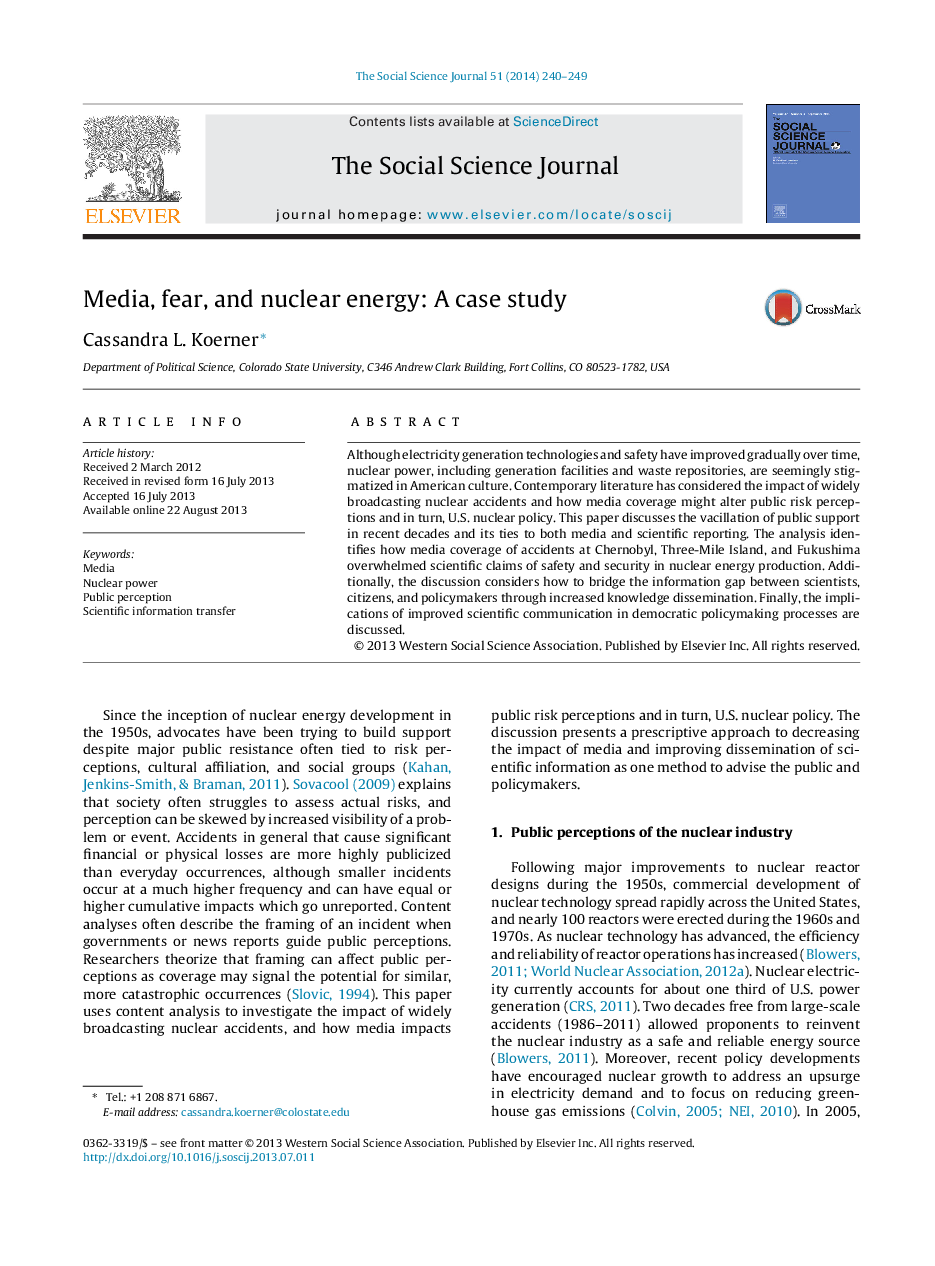| Article ID | Journal | Published Year | Pages | File Type |
|---|---|---|---|---|
| 140106 | The Social Science Journal | 2014 | 10 Pages |
•Content analysis compared media coverage following 3 nuclear accidents.•Timing of nuclear accidents was compared with public support for nuclear power.•Literature review shows public nuclear risk perceptions are higher than scientists.•Highlights need to improve scientific communications with the public.•Provides prescriptive approach to bridge information gap between science and policy.
Although electricity generation technologies and safety have improved gradually over time, nuclear power, including generation facilities and waste repositories, are seemingly stigmatized in American culture. Contemporary literature has considered the impact of widely broadcasting nuclear accidents and how media coverage might alter public risk perceptions and in turn, U.S. nuclear policy. This paper discusses the vacillation of public support in recent decades and its ties to both media and scientific reporting. The analysis identifies how media coverage of accidents at Chernobyl, Three-Mile Island, and Fukushima overwhelmed scientific claims of safety and security in nuclear energy production. Additionally, the discussion considers how to bridge the information gap between scientists, citizens, and policymakers through increased knowledge dissemination. Finally, the implications of improved scientific communication in democratic policymaking processes are discussed.
